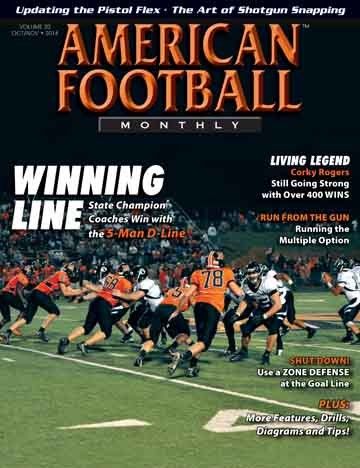Article CategoriesAFM Magazine
|
AFM Subscribers Ask with Cocoa High School (FL) Head Coach John Wilkinson© More from this issueOver the last five seasons, Cocoa High School (FL) has given up an average of only 7.2 points per game on their way to a 58-8 record including 24 shutouts. Cocoa has accomplished this under Head Coach John Wilkinsonís base 3-3-5 defense. What makes it effective, according to Wilkinson, is a combination of slants, stunts, blitzes and disguises. And Wilkinson has done it with many undersized players. His nine-year record at Cocoa now stands at 100-19. This includes three 4A State Championships, a 38-game winning streak and a Florida Coach of the Year Award. Coach Wilkinson answers your questions about his defense. How do you adjust to trips and empty? And do you use any cover 2 concepts vs. trips or empty? John Metcalf, Defensive Coordinator, John Carroll Catholic High School, Birmingham (AL).
|
|
|||||||
| HOME |
MAGAZINE |
SUBSCRIBE | ONLINE COLUMNISTS | COACHING VIDEOS |
Copyright 2025, AmericanFootballMonthly.com
All Rights Reserved





